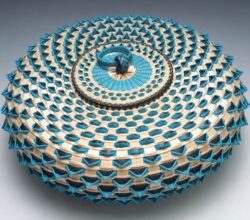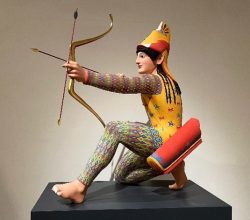
The craft world Is undergoing a democratization
Shantay Robinson | Smithsonian Magazine | 6th June 2022
America’s pre-eminent craft museum is hosting a “massive” survey show. What does it say about the status of this collective art form? Some featured works – quilts, baskets, personal ornaments – have recognizable utility. But craft now goes much further, spanning a broader range of materials and creations. Says one critic, this show highlights that craft has “transcended its focus on technical mastery … and pushed to embrace contemporary concepts about identity and storytelling”.



